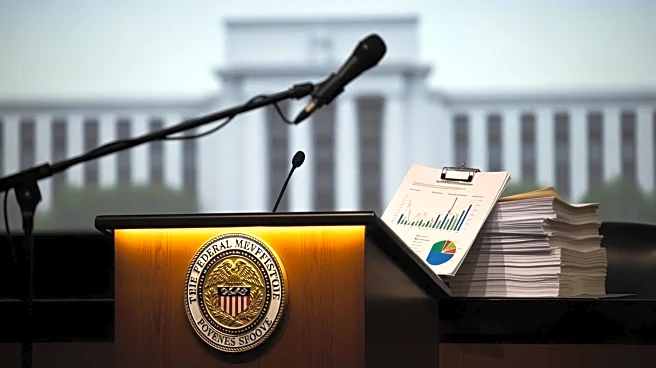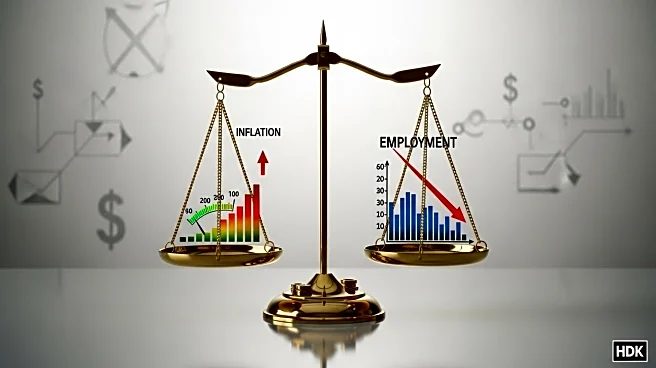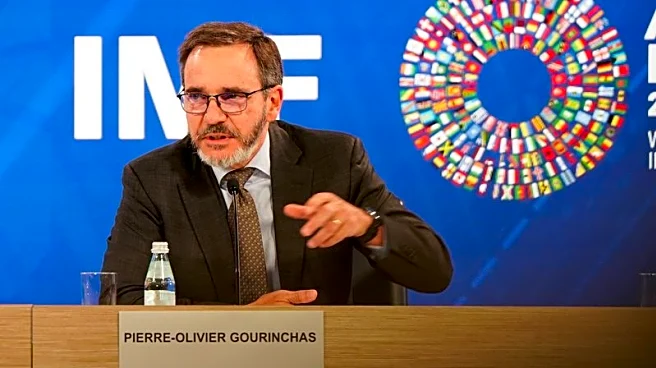What's Happening?
Federal Reserve Chair Jerome Powell has addressed the complexities of monetary policy, emphasizing that there is no 'risk-free' path as the central bank considers interest rate cuts. Speaking at the National
Association for Business Economics, Powell highlighted the challenges posed by a cooling labor market and inflation rates above the Fed's target. Despite gaps in federal data due to a government shutdown, Powell noted that the economic outlook remains relatively unchanged since the last meeting. He acknowledged the risks associated with tariffs, which can impact consumer prices and economic growth. Powell's remarks suggest that the Fed is likely to proceed with rate cuts at its upcoming meetings, balancing the dual mandate of stable prices and maximum employment.
Why It's Important?
Powell's comments underscore the Federal Reserve's critical role in navigating economic uncertainties. Interest rate cuts are a tool to stimulate economic activity, potentially boosting employment and controlling inflation. However, they also reflect the challenges of managing economic growth amid external pressures such as tariffs and trade tensions. The Fed's decisions are pivotal for financial markets, influencing investor confidence and economic forecasts. Businesses and consumers may benefit from lower borrowing costs, while policymakers must address the complexities of economic management. Powell's remarks highlight the delicate balance the Fed must maintain to support economic stability.
What's Next?
The Federal Reserve's upcoming meetings will be crucial in determining the trajectory of interest rates and economic policy. Economic data, particularly related to inflation and employment, will play a significant role in shaping the Fed's decisions. Stakeholders such as investors, businesses, and policymakers will closely monitor these developments, as they impact economic strategies and expectations. The Fed's approach to rate cuts will be influenced by evolving economic conditions, including trade tensions and global economic trends. The outcomes of these meetings will have far-reaching implications for the U.S. economy and financial markets.












